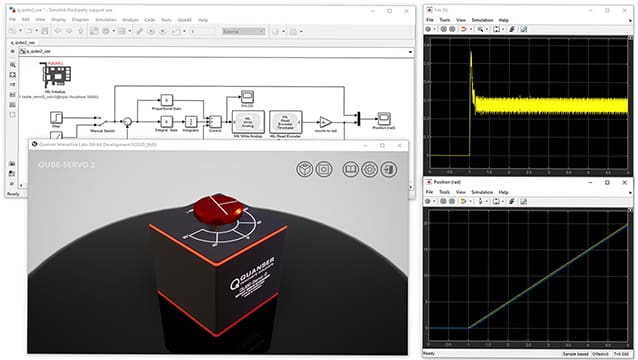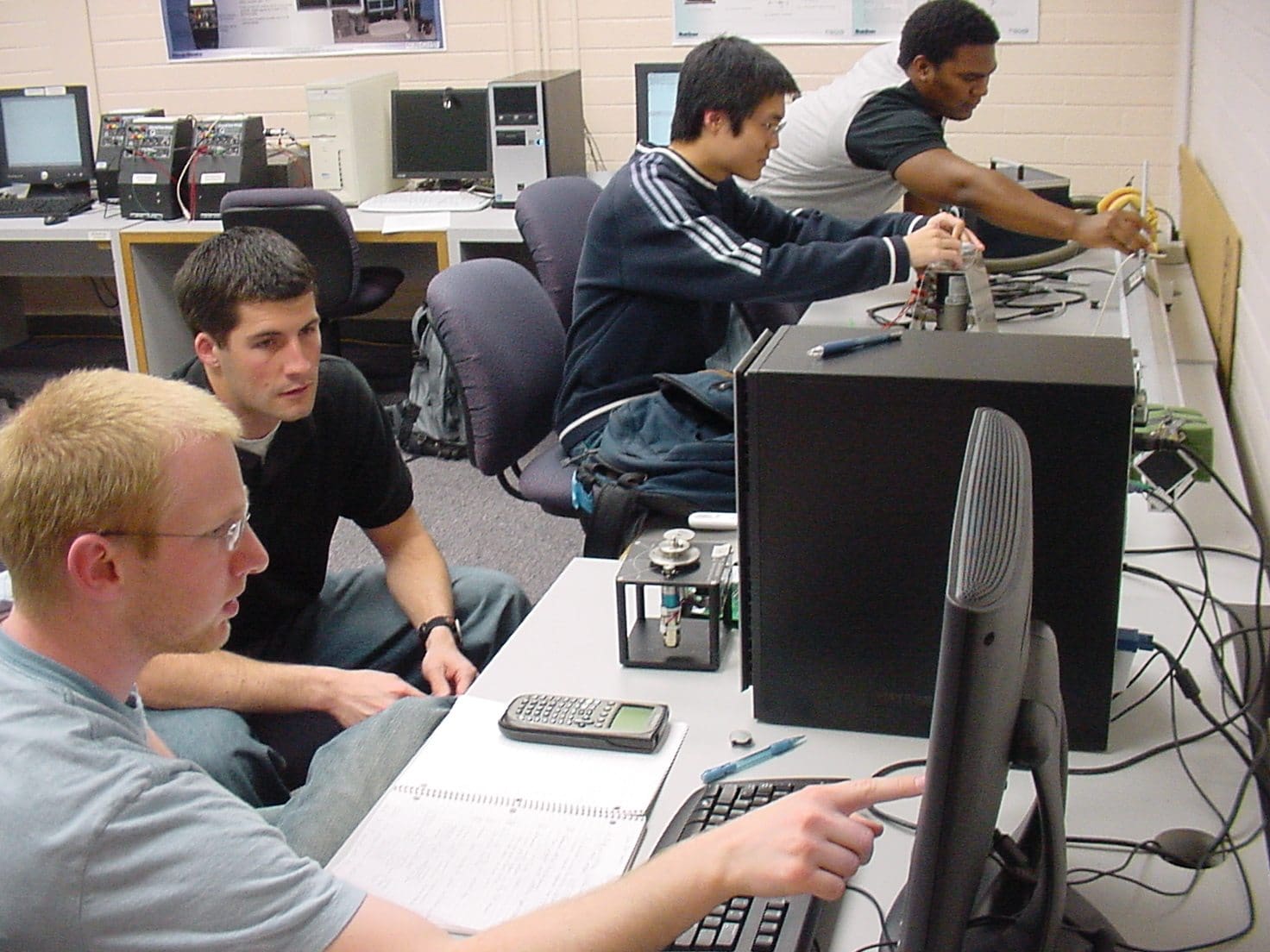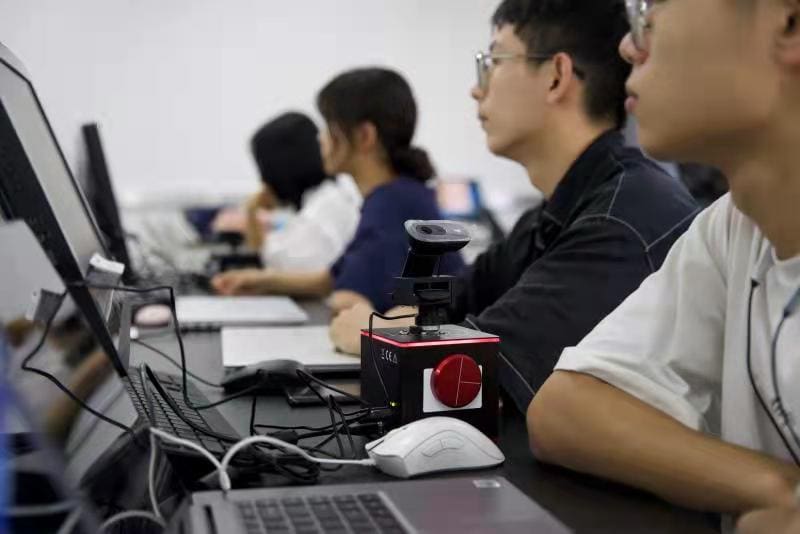
While the electronic world seems to have gone increasingly digital in the past decades, in reality, the analog domain is keeping up the pace. Analog remains as relevant, if not more, as ever. Any electronic system interfacing with the real world, whether through transducers, actuators, or sensors, depends on the analog components. The industry demand for engineers with knowledge of analog electronics remains strong, and no electrical engineering program is scaling down or eliminating courses focused on analog electronics and circuits. The challenge, though, is to show this ‘hidden truth’ to a young generation of students and present the topic in a way that is relevant to the modern industry.
Challenge
Making Analog Electronics Course Modern and Appealing
In the courses focused on digital electronics, students interact with exciting printed circuit boards, miniature integrated components, and easy-to-use modern digital design platforms. However, when it comes to analog electronics, most university teaching labs still rely on breadboards, despite the fact that CAD tools, software, and PCB prototyping are making them completely obsolete in industry. Comparing these two experiences, students get the mistaken impression that while digital is cool and modern, analog is out-dated and old school. For many students, this misapprehension could impact their careers, steering them away from the world of analog electronics.
At the Electrical and Computer Engineering Department of the University of Toronto, about 350 students take one or more courses in analog electronics every year. In the Circuit Analysis course (ECE212), the first course focused on electronic circuits, they work in the lab with breadboards. This helps them master the fundamentals of circuits, wiring, and debugging. For the simple circuits required for this course, breadboards are sufficient, and students can reasonably assemble circuits themselves. This is not the case, however, for the Introduction to Electronics (ECE231) course. Closely tied to the Microelectronic Circuits textbook by renowned authors Adel Sedra and K.C. Smith, both former University of Toronto’s professors, the Introduction to Electronics course deals with more complex analog circuits. These circuits, such as signal amplifiers, are prohibitively difficult to assemble and debug on a breadboard. Dr. Trescases, who has been teaching the course for many years, wanted a lab solution that would reflect the manner in which modern engineers interact with analog electronics. He wanted his students to get exposure to surface-mount components, and focus on investigating advanced topics, rather than having them spend their lab time wiring breadboards.
Solution
An Integrated Platform for Complex Applications
Initially, as a summer research project, Dr. Trescases tasked a small team of his students with developing a new platform for teaching analog electronics. Based on his hardware design and specifications, they developed a prototype of what’s become known as the Analog Electronics Labs (AELabs): modern-looking boards with surface-mount components, and a digital interface to the computer. AELabs modernized the Introduction to Electronics lab, allowing students to interface with real-world devices, such as microphones, speakers, or LEDs. AELabs also presented a set of much more academically rigorous experiments, making the use of the lab time more efficient and effective.
The system consisted of an interface board, which provided interaction with the custom GUI, as well as 6 plug-and-play experimental boards. Each experiment gave students hands-on experience with a different component or concept in analog electronics, including operational amplifiers, MOSFETs, and BJTs. The experimental boards were designed with highly reconfigurable circuits. SPI-controlled switches and potentiometers allowed students to modify the circuits via software without any need to wire components. Each board also had oscilloscope probe points at key locations in each circuit to allow students to measure important signals and compare them to simulations in real time. With AELabs’ controllable preassembled circuits, students could explore complex applications such as MOSFET amplifiers and diode charge pumps. It would be impossible to cover the same topics in the allocated lab time using conventional breadboards. Furthermore, the AELabs experiments were specifically designed to complement the Sedra and Smith’s Microelectronic Circuits textbook, making it easy for the course instructor to reinforce the lecture theory with practical lab assignments.
Result
Transforming the Students’ Experience
Using the AELabs in the course for two semesters did not allow Dr. Trescases to quantify their impact on the learning outcomes, but he considers the students’ experience in the lab as truly transformative. The change of attitude was almost immediate, with student engagement positively influenced by hands-on interactions with real-world circuit applications. For example, students were encouraged to bring their smartphones to the lab and play their favorite music through the amplifier circuit on the BJT experiment board. By modifying the configuration of the amplifier and they could hear the resulting changes in the audio output through their headphones.
Without AELabs, the chance students would graduate from the Electrical Engineering program without ever having seen or interacted with a surface-mount component was real. For Dr. Trescases that would mean he failed the students as an instructor. AElabs taught students how PCBs work, how devices are connected, and how the components are mounted, all of which is extremely useful.
The AELabs design earned the student team the University of Toronto’s 2013 Gordon R. Slemon Design Award, honoring the most imaginative design project, product design, and execution. After graduating from the Electrical Engineering program, the students from the AELabs design team founded the startup Illuster Technologies, with the aim to commercialize the product. The feature article on the AELabs, published in the ECE’s magazine Annum 2014, caught an eye of Dr. Jacob Apkarian, renowned modern control, and mechatronics pioneer, Quanser’s founder and one of Dr. Sedra’s students in 1970s. Dr. Apkarian recognized that AELabs was consistent with the core philosophy of all Quanser educational platforms, and the two companies started the collaboration to fully commercialize and launch the AELabs.
Quanser, with over 25 years of experience in design and development of teaching solutions for engineering labs, immediately noticed the strong potential synergy of the AELabs solution and the National Instruments ELVIS platform. Under the guidance of Quanser engineers, the Illuster team redesigned the AELabs control board to take full advantage of the NI ELVIS. NI ELVIS platform allowed for the integration of instrumentation, function generation, data acquisition and other core tools. The resulting AELabs for NI ELVIS offers a simpler, more compact, and portable solution for any engineering lab. Quanser helped to refine the industrial design of the boards to ensure resilience capable of withstanding even the most enthusiastic users. Keeping the original course materials closely tied to the Sedra and Smith’s Microelectronic Circuits textbook, the Quanser team also helped to align them with modern approaches to courseware design. With these enhancements, the lab experience can be now better integrated into the course, tying the theoretical knowledge to the hands-on practical learning through a set of motivating experiments.



